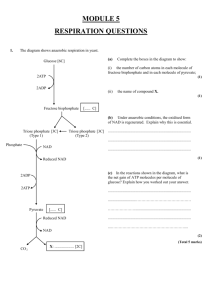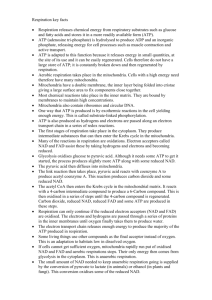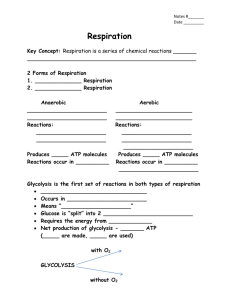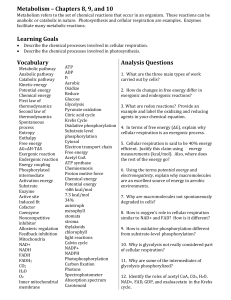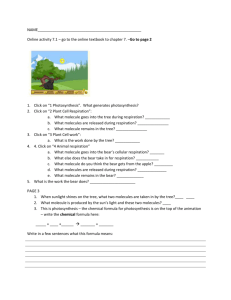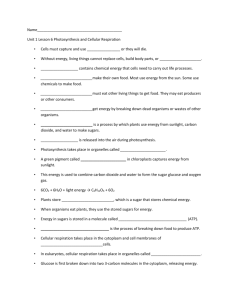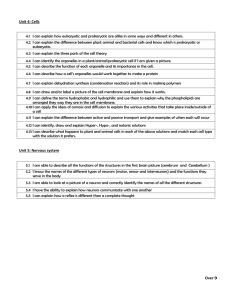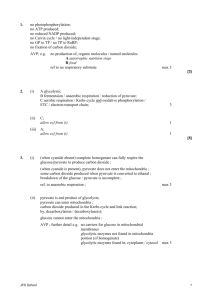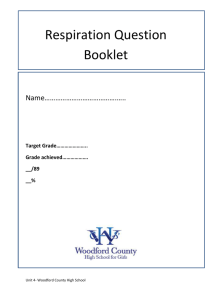respiration 1(1)
advertisement
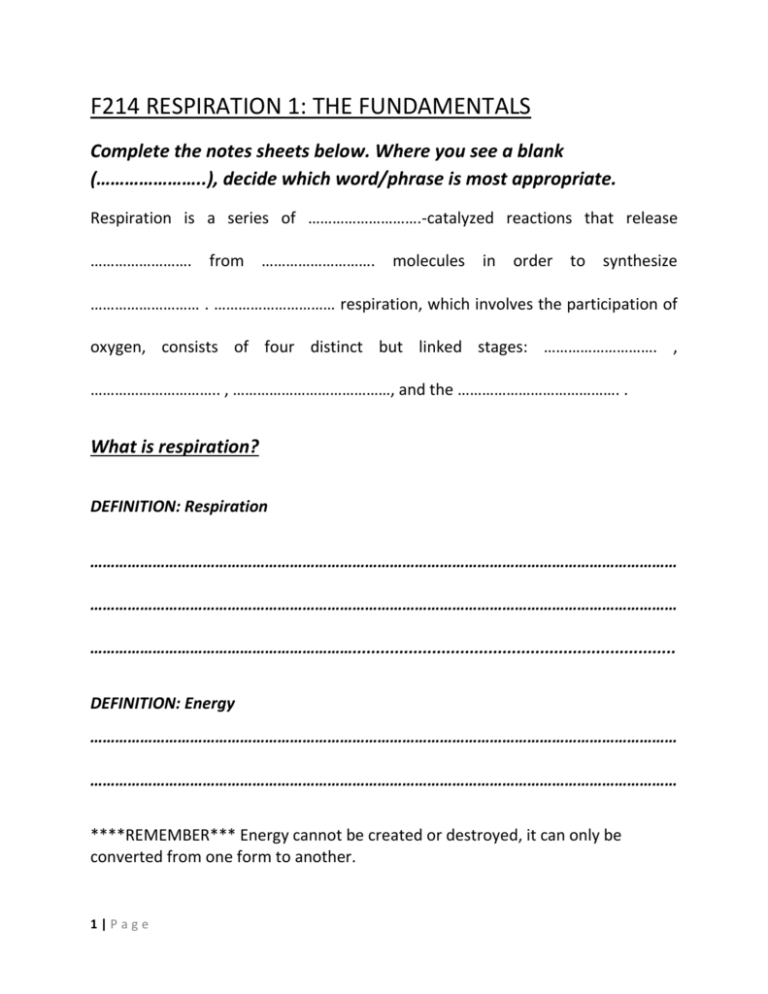
F214 RESPIRATION 1: THE FUNDAMENTALS Complete the notes sheets below. Where you see a blank (…………………..), decide which word/phrase is most appropriate. Respiration is a series of ……………………….-catalyzed reactions that release ……………………. from ………………………. molecules in order to synthesize ……………………… . ………………………… respiration, which involves the participation of oxygen, consists of four distinct but linked stages: ………………………. , ………………………….. , …………………………………, and the …………………………………. . What is respiration? DEFINITION: Respiration …………………………………………………………………………………………………………………………… …………………………………………………………………………………………………………………………… ………………………………………………………..................................................................... DEFINITION: Energy …………………………………………………………………………………………………………………………… …………………………………………………………………………………………………………………………… ****REMEMBER*** Energy cannot be created or destroyed, it can only be converted from one form to another. 1|Page Why respire? Respiration produces energy for METABOLIC (both ANABOLIC AND CATABOLIC) reactions such as: a. ……………………………..: Moving ions and molecules against a concentration gradient. b. ……………………………..: Secretion of large molecules. c. ……………………………..: Movement of large molecules into cells. d. ……………………………..: Synthesis of large molecules from smaller ones. e. ……………………………..: Preparing a cell for anaphase. f. ……………………………..: Powering bacterial flagella, eukaryotic cilia, muscle contraction and microtubule motors that transport organelles. g. ……………………………..: E.g. glucose is phosphorylated at the start of respiration to make it more chemically unstable. ATP (Adenosine triphosphate) ATP is a phosphorylated nucleotide. It is commonly referred to as the universal ……………………. ……………………… . 2|Page Add the following labels to the diagram below left and then draw and label a simplified version showing the basic structure to the right: Adenine, Adenosine, Ribose, Phosphate groups. ATP can be …………………….. to form ADP and Pi (……………………………..), releasing 30.6 KJ.mol-1 of energy. It is a …………………………….-lived molecule which is constantly being hydrolysed and resynthesized. ATP + H20 ADP + Pi (+30.6 KJ.mol-1) ATP is derived from …………………………… . We can tell this because the sugar is ………………………. . 3|Page Mitochondria The diagram shows a mitochondrion. Label the following: Inner membrane, outer membrane, matrix, intermembrane space, cristae RESPIRATION ESSENTIALS 1. Oxidation and reduction ***REMEMBER*** OIL RIG O……………………. I…………………….. L……………………. R…………………….. I……………………… G……………………. Oxidation and reduction are coupled, since if one substrate becomes oxidised, another must be reduced. Such reactions are called REDOX reactions. 4|Page 2. Respiration is a multi-step process. The multitude of reactions that take place from start to finish can be summarised in four key steps: a. Glycolysis: Glucose (….C) is broken down to produce 2 molecules of Pyruvate (….C). b. The link reaction: Pyruvate is dehydrogenated (………………… is removed) and decarboxylated (…………………. is removed) and converted to acetate. c. Krebs cycle: Acetate is dehydrogenated and decarboxylated. d. Oxidative phosphorylation: ADP is phosphorylated to ……… . 3. Coenzymes In the reactions of respiration, coenzymes become …………………. as substrates become …………………….. . These are necessary because the reactions are catalysed by inefficient dehydrogenase ………………… . Hydrogen ATOMS are combined with coenzymes such as NAD (Nicotinamide adenine dinucleotide) to form ………………….. NAD (or NADH). NADH is later split into electrons and protons (…………. ions) in the inner mitochondrial membranes where they are involved in oxidative phosphorylation, a process which produces a lot of ……………………. . NAD is then recycled back into the earlier stages of respiration. 5|Page 1. NAD Sketch and label a simplified version of the structure of NAD (oxidised) in the box below: 2. Coenzyme A (CoA): Carries acetate groups produced from pyruvate (the product of glycolysis) during the link reaction onto the krebs cycle. 6|Page



